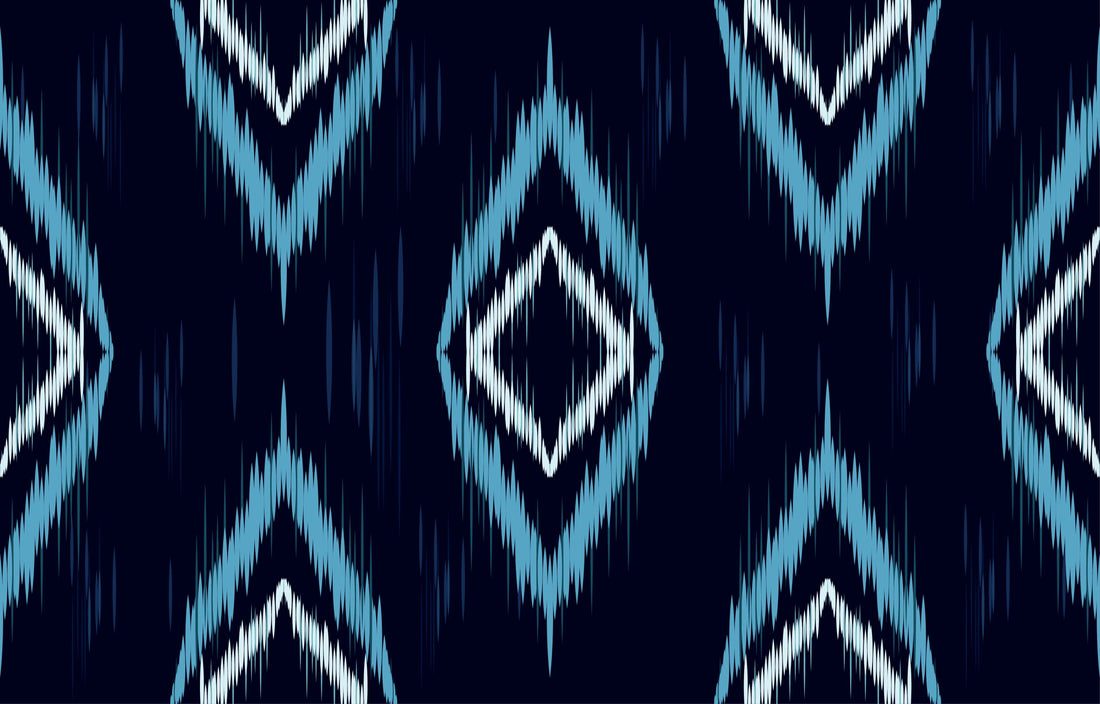Most of us are familiar with the fact that India is quite a powerhouse of indigenous textiles, that have been running through generations, and have contributed so much to the Indian economy. We all love to deck up in the colorful weaves and prints in any occasion all through the year! The complexity of Indian textiles is world renowned, and every step of craftsmanship is highly coveted by all.
Orissa, one of the states on the Eastern Coast of India, houses some of the most elegantly engineered textiles on earth.
The process of making a fabric of Ikat weave by hand takes about seven months and involves two craftsmen, as the production goes through 14 stages of creation*. Ikat also has different types (depending on the challenges of the engineering). This weave is also one of the only weaves in the world, where the yarn is dyed with the print before the weaving even starts. Can you imagine the precision the dyer and the weaver have to keep in order to match the prints on the warp and weft (tana bana) for the entire yardage?
This textile also shows how advanced India was centuries back, when the rest of the world could barely have plain weaves on cotton or jute.
The history of this beautiful weave is linked to the Lord Jagannath cult practice which is a tradition in Orissa. Every colour used in the fabric reflects a symbolic concept of the Jagannath cult: the four primary colours used in keeping with this tradition are white, black, yellow, and red, with green added at a later date. These colours are said to denote the past, present, and future, to the Vedas and the Gods. It is also inferred that the Ikat silk art came into existence by copying the temple architecture which existed much earlier.
Speaking of colors, Orissa also houses the Kotpad cotton, which originate from the Koraput district of tribal weavers who color the cotton with vegetable dyes. Along with tussar silk, Kotpad cotton and Ikat weaves make a powerful combination of textiles in Orissa.
Much alike the bright scarlet flowers Krushnachuda that start blooming in spring and are devoted to the feet of Lord Jagannath with these rich fabrics that Jagannath is draped with!
Just as the name proposes, Krushnachuda...hues of Orissa, presents to you it's beautiful collection of fabrics curated for the modern daywear! Kudos to the brand for upholding such an important piece of India and bring it closer to everyday fashion!
- Introduction by Indian Textile enthusiast and expert Gargi Chatterjee.
* References of Indian Textiles - credits Suchit, Das. orissahandloom.com. Odisha Handloom. Retrieved 29 September 2018, Ghosh, G. K.; Ghosh, Shukla (2000). Ikat Textiles of India.
Blogger - Gargi Chatterjee
Gargi Chatterjee has been studying and working closely with Indian Textiles for over 15 years. An alumni of NIFT, and a retail merchandiser and buyer by profession, Gargi shares her passion for textiles both woven and printed from the handloom and handcrafted sectors of India.

